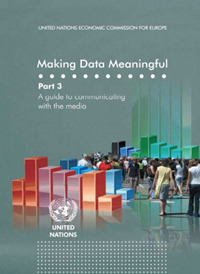“High carb breakfasts boost brain power”. Now, why does that sound familiar.. Oh, yes. Last month it was the Egg Foundation pushing “Eggs may increase alertness”. This time it’s the Glycemic Index Foundation.
As the school year gets under way, new research is adding further weight to evidence that breakfast is the most important meal of the day, especially for children.
Research published last June, so it’s hardly new for the new school year. And the research only studied children who regularly eat breakfast, so it can’t really be evidence that breakfast is the most important meal of the day, or say whether this is more true for children.
Research by three British institutions
Author names? Journal names? Institution names? I’ve seen at least five universities in Britain with my own eyes, and am reliably informed there are several more.
has shown a strong link between low GI, higher carbohydrate breakfasts and better academic performance.
We can allow “strong link” as mere puffery, but the research did not include any data whatsoever about academic performance
The study, which involved 60 students, found that a low GI, higher carbohydrate breakfast helped students do maths tasks more quickly and accurately, and improved attentiveness.
I suppose counting backwards from 100 by 7s just about qualifies as a maths task, even for teenagers, but it’s a bit of a stretch.
The Glycemic Index (GI) is a measure of how effective carbohydrates – sugars and starches – are on blood glucose levels.
GI is a measure of how fast or slowly carbohydrates affect blood glucose levels. Wikipedia has it much more clearly “Carbohydrates that break down quickly during digestion and release glucose rapidly into the bloodstream have a high GI; carbohydrates that break down more slowly, releasing glucose more gradually into the bloodstream, have a low GI.”
At least, by quoting Dr Alan Barclay, of the Glycemic Index Foundation, the story did make it possible to track down the real research. Dr Barclay’s blog has a link to the paper, which was published in the European Journal of Clinical Nutrition. Unless you’re at a university, you will have to pay to read it, so I will summarise.
Of the 60 children recruited, 19 had a “High GL, low GI” breakfast. This meant they were in the lower half for GI and the upper half for glycemic load (total carbohydrates), not that their breakfasts were high or low GI on an absolute scale. There were three other groups, from the three other combinations of high/low GI and GL.
The children had seven cognitive function tests. Three of the seven didn’t show any differences between the breakfast groups. For the other four tests the results were mixed:
Specifically, high-GI was associated with better immediate recall (short-term memory), high-GL with better matrices performance (inductive reasoning), and low-GI and high-GL with better speed of information processing (vigilance, sustained attention) and serial sevens performance (vigilance, working memory).
And this is before we start worrying about the correlation vs causation issue, the fact that the high-GL,low-GI breakfast averaged more total calories, or the fact that 13 of the 19 teenagers in the high-GL, low-GI group were girls.

